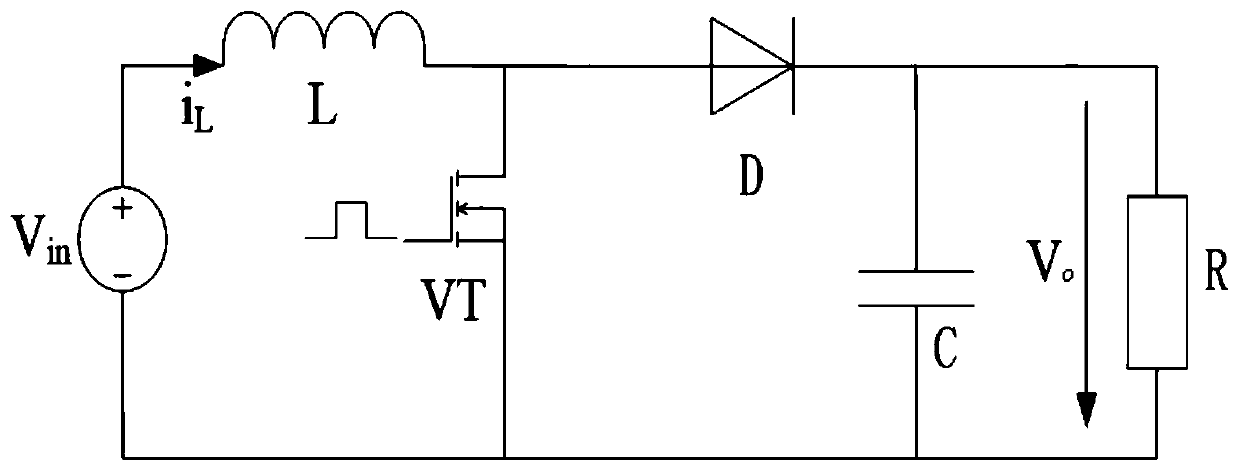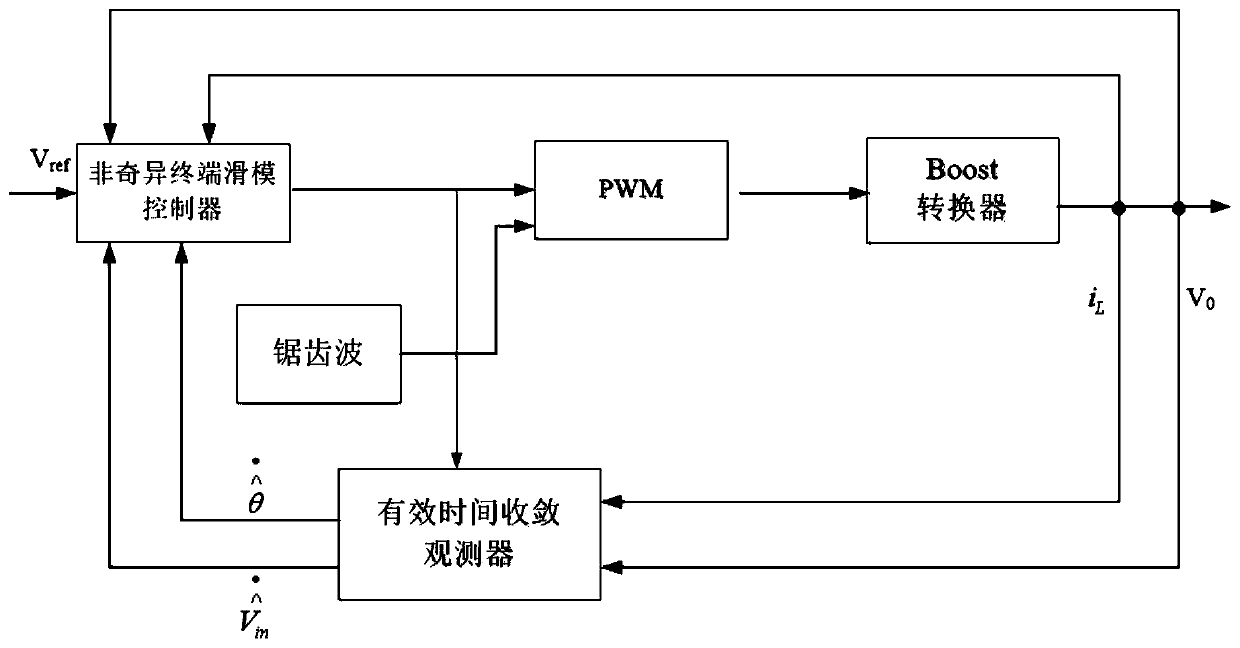Boost type converter control method and system based on finite time convergence observer
A technology of converter control and limited time, which is applied in the direction of control/regulation system, output power conversion device, DC power input conversion to DC power output, etc. It can solve poor anti-interference performance, slow dynamic response and poor steady-state performance and other problems, to achieve strong robustness, simple control law, and strong practicability
- Summary
- Abstract
- Description
- Claims
- Application Information
AI Technical Summary
Problems solved by technology
Method used
Image
Examples
Embodiment 1
[0036] A control method and system for a Boost converter based on a finite-time convergence observer in this embodiment, which designs a new control system on the basis of a Boost circuit, including a finite-time convergence observer module and a non-singular terminal sliding mode controller module And the PWM module, the serial use of the three modules, and a comprehensive design to ensure the coordinated operation between the modules. Its design method is a new method proposed on the basis of the research on the traditional non-singular terminal sliding mode control. The principle and implementation of the control method in this embodiment will be described in detail below:
[0037] Step 1. Establish the mathematical model of the Boost converter
[0038] to combine figure 1 , where V in is the input DC voltage, VT is the controllable power device, V o is the output voltage, D is the freewheeling diode, L is the filter inductance, C is the filter capacitor, R is the load r...
PUM
 Login to View More
Login to View More Abstract
Description
Claims
Application Information
 Login to View More
Login to View More - R&D
- Intellectual Property
- Life Sciences
- Materials
- Tech Scout
- Unparalleled Data Quality
- Higher Quality Content
- 60% Fewer Hallucinations
Browse by: Latest US Patents, China's latest patents, Technical Efficacy Thesaurus, Application Domain, Technology Topic, Popular Technical Reports.
© 2025 PatSnap. All rights reserved.Legal|Privacy policy|Modern Slavery Act Transparency Statement|Sitemap|About US| Contact US: help@patsnap.com



